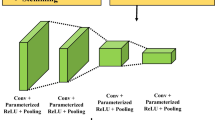Abstract
Neural network creates a neuron-based network similar to the human nervous system to solve classification problems efficiently. The smishing problem is a binary classification problem in which attackers target smartphone users through text messages. As smishing is a remarkable cybersecurity issue that is troubling researchers and smartphone users these days. Addressing this security issue using the most efficient algorithm is the need of the hour. This manuscript presented an algorithm for the model proposed by authors in ‘Smishing Detector’ model and implemented it using Neural Network. The result obtained proves that the neural network is much efficient in detecting smishing problem. Neural Network outperformed other machine learning algorithms with a difference of 1.11%. Neural Network performed with the final accuracy of 97.40%. In this paper, system extracted the most efficient features of smishing SMS (Short Message Service) using the Neural Network. This manuscript also reported the accuracy shown by the system for each feature selected and implemented. It is evident from the implementation that each feature selected is most effective in smishing detection and URL (Uniform Resource Locator) feature is the most effective feature with an accuracy of 94%.








Similar content being viewed by others
Data Availability
The datasets generated during and/or analyzed during the current study are available from the corresponding author on reasonable request.
References
Anti-Phishing Working Group (APWG). Phishing activity trends report. 2020. https://apwg.org/. Accessed 2020.
The New Indian Express. Increasing cybercrime: UN reports 350 per cent rise in phishing websites during pandemic. 2020. https://www.newindianexpress.com/business/2020/aug/08/increasing -cybercrime-un-reports-350-per-cent-rise-in-phishing-websitesduring-pandemic-2180777.html. Accessed 2020.
CallHub. 6 reasons why sms is more efective than email marketing—callhub. 2016. https://callhub.io/6-reasons-sms-efectiveemail-marketing/. Accessed 2018.
Mishra S, Soni D. SMS phishing and mitigation approaches. In: Twelfth International Conference on Contemporary Computing (IC3), Noida, India, 2019, pp. 1–5, https://doi.org/10.1109/IC3.2019.8844920.
McAfee. Protect yourself from smishing. 2012. https://securingtomorrow.mcafee.com/consumer/family-safety/protect-yourselffrom-smishing/. Accessed 2017.
Almeida TA, Hidalgo JMG, Yamakami A. Contributions to the study of SMS spam filtering: New collection and results, in: 11th ACM Symposium on Document Engineering, 2011, pp. 259–262
Pinterest, Smishing message images, November 20 2018, Retrieved from https://in.pinterest.com/seceduau/smishing-dataset/?lp=true.
Lee A, Kim K, Lee H, Jun M. A study on realtime detecting smishing on cloud computing environments. In: Park JJJH, Chao HC, Arabnia H, Yen NY, editors. Advanced multimedia and ubiquitous engineering. Berlin: Springer; 2016. p. 495–501.
Jain A. A novel approach to detect spam and smishing SMS using machine learning techniques. Int J E-Serv Mobile Appl. 2019;2:2. https://doi.org/10.4018/IJESMA.2020010102.
Ghourabi A, Mahmood MA, Alzubi QM. A hybrid CNN-LSTM model for SMS spam detection in Arabic and English messages. Fut Internet. 2020;12:156.
Mishra S, Soni D. Smishing detector: a security model to detect smishing through sms content analysis and url behavior analysis. Future Gener Comput Syst 2020;108:803–15. https://doi.org/10.1016/j.future.2020.03.021, http://www.sciencedirect.com/science/article/pii/S0167739X19318758.
Sheikhi S, Kheirabadi MT, Bazzazi A. An effective model for SMS spam detection using content-based features and averaged neural network. Int J Eng (IJE) IJE Trans B Appl. 2020;33(2):221–8.
Rao AS, Avadhani PS, Chaudhuri N. A content-based spam e-mail filtering approach using multilayer perceptron neural networks. Int J Eng Trends Technol. 2016;41:44–5. https://doi.org/10.14445/22315381/IJETT-V41P210.
Jain AK, Goel D, Agarwal S, et al. Predicting spam messages using back propagation neural network. Wireless Pers Commun. 2020;110:403–22. https://doi.org/10.1007/s11277-019-06734-y.
Mathappan N, Rs S, Angamuthu K, Thangaraj P. SMS spam detection using deep neural network. Int J Pure Appl Math. 2018;119:2425–36.
Jain A, Gupta BB. Feature based approach for detection of smishing messages in the mobile environment. J Inf Technol Res. 2019;12:17–35. https://doi.org/10.4018/JITR.2019040102.
Zhou C, Sun C, Liu Z, Lau F (2015) A C-LSTM neural network for text classification.
Roy PK, Singh JP, Banerjee S. Deep learning to filter SMS spam. Fut Gener Comput Syst. 2020;102:524–33.
GunikhanSonowal K, Kuppusamy S. SmiDCA: An anti-smishing model with machine learning approach. Comput J. 2018;61(8):1143–57.
Joo JW, Moon SY, Singh S, Park JH. S-detector: an enhanced security model for detecting smishing attack for mobile computing. Telecommun Syst. 2017;66:1–10.
Sandhya M, Soni D. A content-based approach for detecting smishing in mobile environment. Suscom. 2019. https://doi.org/10.2139/ssrn.3356256.
Kang A, Lee JD, Kang WM, Barolli L, Park JH. Security considerations for smart phone smishing attacks. Adv Comput Sci Appl. 2014. https://doi.org/10.1007/978-3-642-41674-3_66.
Sonowal G, Kuppusamy K. Phidma—a phishing detection model with multi-filter approach. J King Saud Univ Comput Inf Sci. 2017;29:1–15.
Wu L, Du X, Wu J. MobiFish: A lightweight antiphishing scheme for mobile phones. In: 23rd International Conference on Computer Communication and Networks, ICCCN, 2014, pp. 1–8.
Zhang J, Wang Y. A real-time automatic detection of phishing URLs. In: 2nd International Conference on Computer Science and Network Technology, ICCSNT, IEEE, 2012, pp. 1212–1216.
Mohammad RM, Thabtah F, McCluskey L. Intelligent rule-based phishing websites classification. IET Inf Secur. 2014;8:153–60.
Yue Z, Jason H, Lorrie C. Cantina: a content-based approach to detecting phishing web sites. 2007;639–648, https://doi.org/10.1145/1242572.1242659.
Sophie G-P, Gustavo GG, Maryline L. Decisive heuristics to differentiate legitimate from phishing sites. In: Conference on Network and Information Systems Security, La Rochelle, 2011, pp. 1–9, https://doi.org/10.1109/SAR-SSI.2011.5931389
Author information
Authors and Affiliations
Contributions
SM: conceptualization, methodology, software, data curation, writing—original draft, visualization, and investigation. DS: conceptualization, supervision, validation, and writing—review and editing.
Corresponding author
Ethics declarations
Conflict of interest
The authors declare that they have no known competing financial interests or personal relationships that could have appeared to influence the work reported in this paper.
Additional information
Publisher's Note
Springer Nature remains neutral with regard to jurisdictional claims in published maps and institutional affiliations.
This article is part of the topical collection “Advances in Computational Approaches for Artificial Intelligence, Image Processing, IoT and Cloud Applications” guest-edited by Bhanu Prakash K N and M. Shivakumar.
Rights and permissions
About this article
Cite this article
Mishra, S., Soni, D. Implementation of ‘Smishing Detector’: An Efficient Model for Smishing Detection Using Neural Network. SN COMPUT. SCI. 3, 189 (2022). https://doi.org/10.1007/s42979-022-01078-0
Received:
Accepted:
Published:
DOI: https://doi.org/10.1007/s42979-022-01078-0




